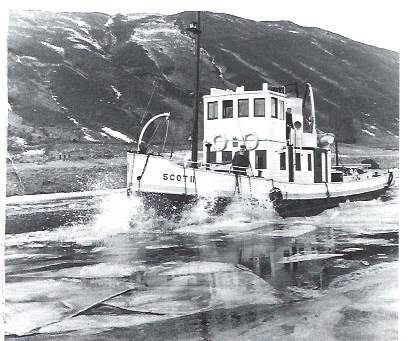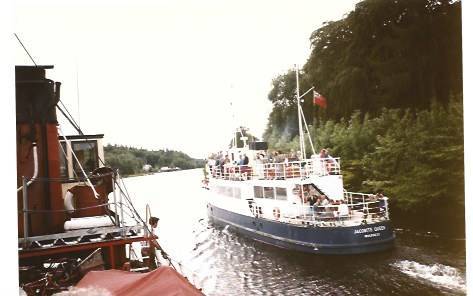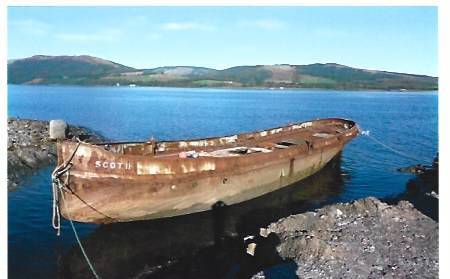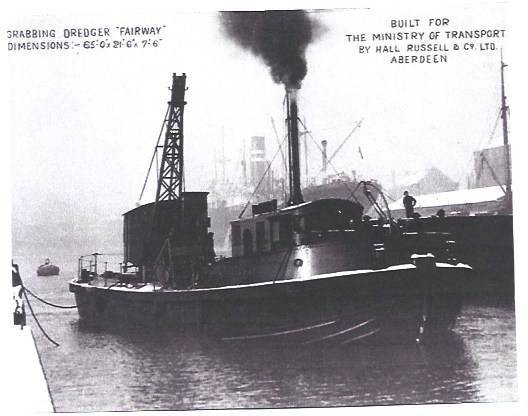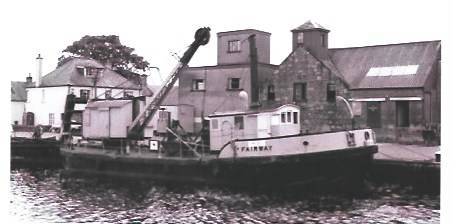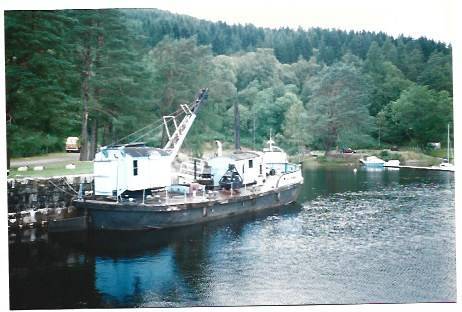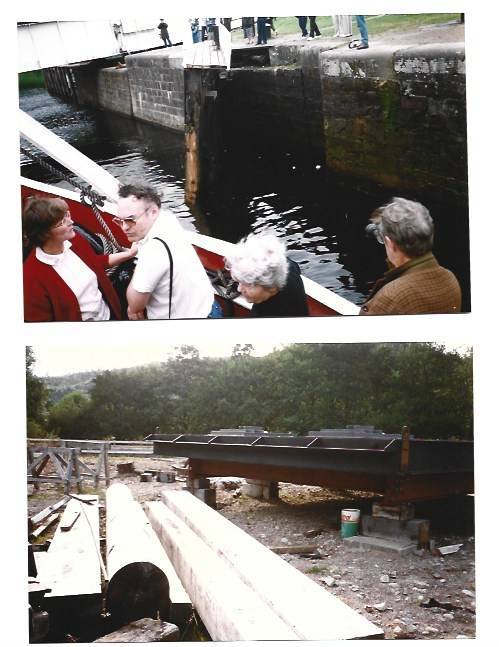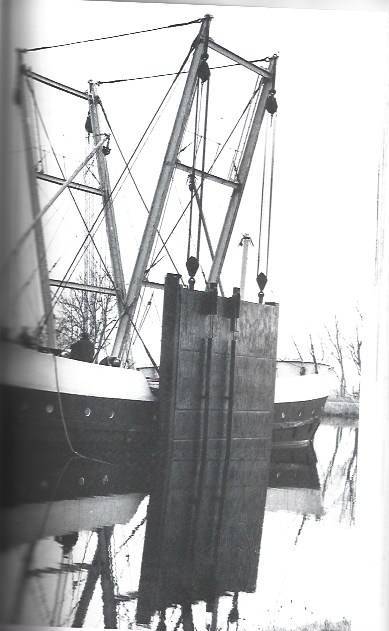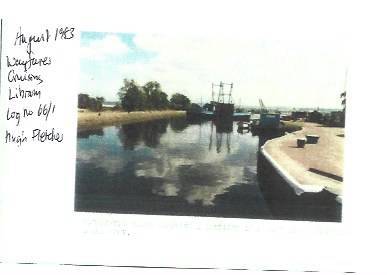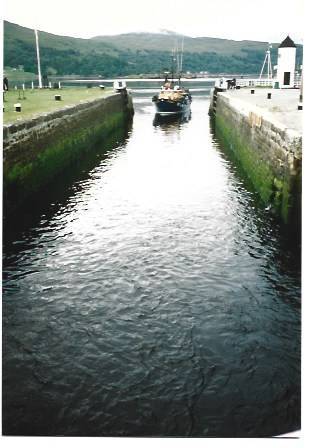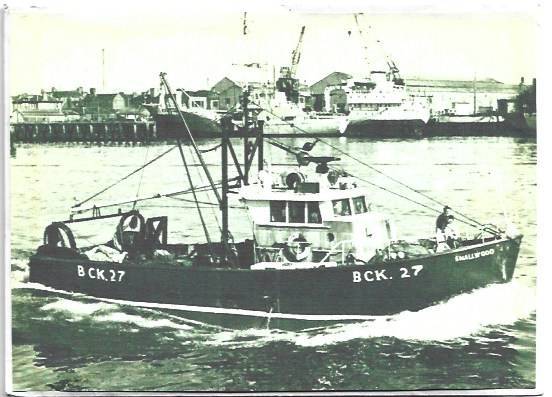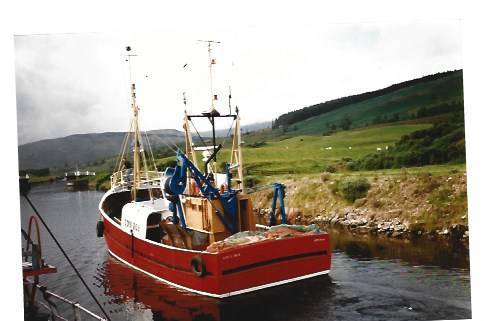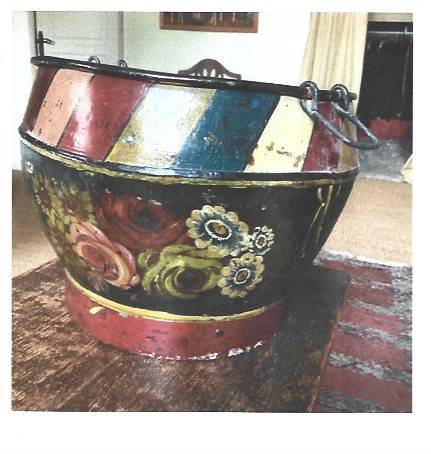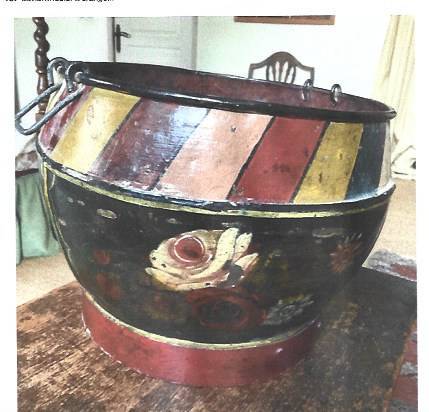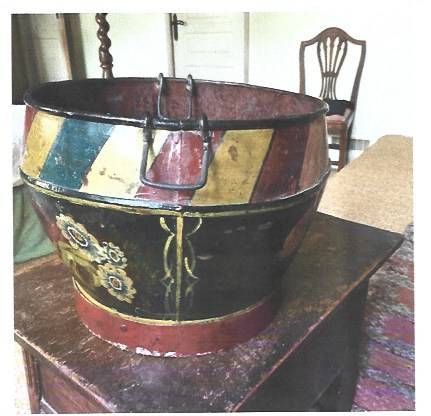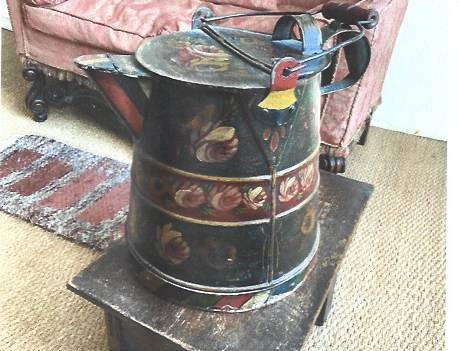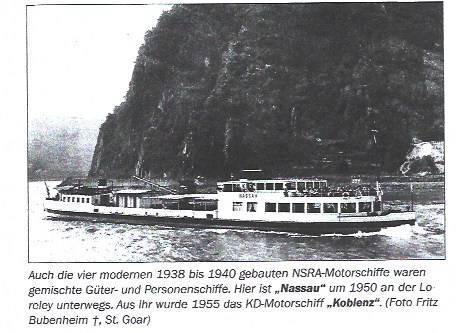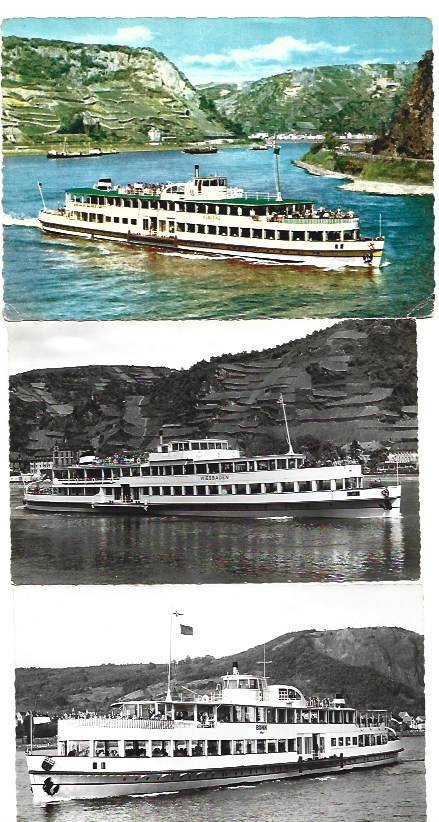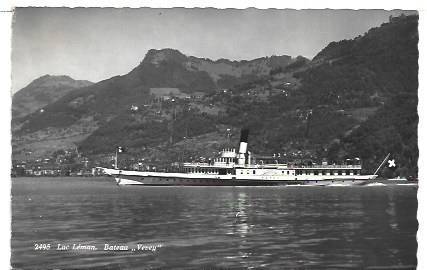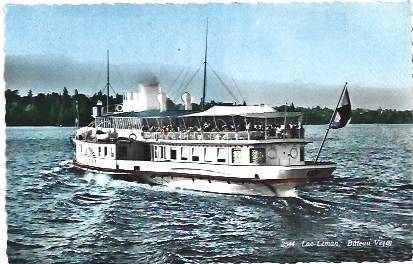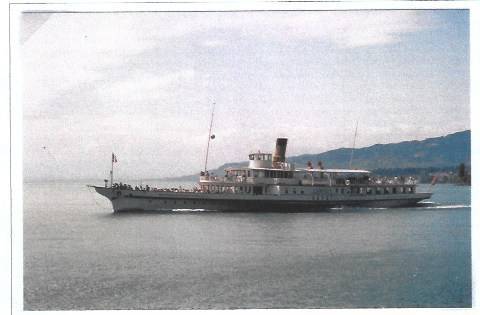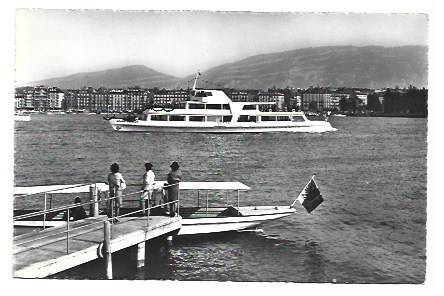

davidwheeler
Member-
Posts
177 -
Joined
-
Last visited
-
Days Won
1
davidwheeler last won the day on March 24
davidwheeler had the most liked content!
Recent Profile Visitors
The recent visitors block is disabled and is not being shown to other users.
davidwheeler's Achievements
Collaborator (5/12)
188
Reputation
-
I have added this picture because I like it. Maybe others will as well. Fifty years ago these small ships, run by families, brought small quantities of goods into small ports for delivery to small concerns for distribution locally. At that time it must have been reasonably profitable for everyone. And why not this one as well. Not in Exeter Basin but below the swing bridge, because of partial canal closure.
-

Caledonian Canal - maintenance craft and other vessels
davidwheeler replied to davidwheeler's topic in History & Heritage
Well, I wonder, if, when you are there, you might be able to find out a bit more about the Gatelifter 111. Surely one of the most unusual of any vessel on any British canal. Someone there must know something. I have tried without any success,but I am far away and I do not have your clout. -

Caledonian Canal - maintenance craft and other vessels
davidwheeler replied to davidwheeler's topic in History & Heritage
I think that perhaps I have gone a bit too far with this so I will end it with just two more, because these two were again unique to the Caledonian Canal and they have to all intents and purposes gone. The first is the Scot 11. Built in 1931 by Robb Henry Ltd of Leith, of steel. 75' x 15' x 8.50, purpose built for the Ministry of Transport as a steam powered ice-breaking tug for duties on the Caledonian Canal. In 1960 converted to diesel with Kelvin T8 engine. From 1961 to 1991 cruised on Loch Ness with carrying capacity of 70 passengers. Also continued with ice-breaking duties during winters. 1992 to 1999 leased by British Waterways as a floating restaurant at Laggan Locks. In 1999, taken back by British Waterways for restoration. In the summer of 2005 bought by private individual for restoration and towed to the Isle of Bute. Sank, and remained under water for 10 months. Raised and put on a mooring in Kyles of Bute. In 2009 taken back to Bute and rescued by the Save the Scot 11 group, which plans to return her to her former glory....The work involved is self-evident from the photo of the hull. The colour photo of the ship was taken in August 1990, her last full year of service. There were not many passengers on board. Compare that with the Jacobite Queen on the same day. The Jacobite Queen herself an interesting ship built in 1949 by Hawthorn Leslie as a passenger ferry across the River Tyne. Nick Walker, who knew most of what went on on the Caledonian, told me the British waterways had given the Jacobite Queen the better berth for passenger accessibility, the Scott 11's berth outside the BW Dock building was a lot less convenient. Whatever is done to rebuilt the Scot 11, she will not be the same. A second vessel unique to the Canal, effectively lost. Finally, the unregistered, non-propelling grab dredger 'Fairway'. Built for the Ministry of Transport specifically for the Caledonian Canal in 1937, with a vertical boiler powering the Priestman crane. Disposed of by British waterways sometime in the 1990s and converted to a floating restaurant in Muirtown Basin. Sold again in 2010 for use as a houseboat. A third vessel unique to the Canal, lost. There were other interesting ships and vessels in and about the Canal in those days, but I will stop here. For those that are interested, A D Cameron's book The Caledonian Canal is full of interest. Two of these illustrations are from his book. I recommend it. -

Caledonian Canal - maintenance craft and other vessels
davidwheeler replied to davidwheeler's topic in History & Heritage
I will go on then and touch on gates and the Gatelifter 111. The Fraenkel Report of 1975 marked the `Caledonian Canal as in dire need of extensive repairs. In particular the lock gates. The wooden gates were to be replaced by steel one fitted with buoyancy tanks to avoid the distorting effect of opening and closing the gates by pressure on the top which caused the gates to bend. All the gates had been replaced by 1989 save the bottom gates of Fort Augustus bottom lock which hung on until 1992. It is the bottom lock gate that you see in the photo and the problem is self-evident. The other photo shows a steel gate awaiting placement. Until 1990, at the latest, gates for replacement and new gates were moved about the canal by the Gatelifter 111. It was in August that year that I walked out along the shingle below the Inverness sea lock to where the Gatelifter 111 was lying high and dry. I assumed then that she was on her way to the breakers. It was a most impressive sight. Her purpose was clear from the lifting equipment - the wooden gates weighed around 20 tons each. But was she built for that purpose? I did not think so. Why that hull shape? Why all those portholes along her sides? My thoughts were that she had been a lightship. Whatever her origines, an interesting vessel, replaced by land based mobile cranes. So another of the Caledonians unique service vessels was lost. More perhaps later but enough for now. -
This is not a description of the canal, no more than of its history - those you can find easily elsewhere. It is an indication of the vessels you could have expected to meet on a transit of it during August 1990. It is about boats and ships, with the waterway in the background. Most of the vessels I will describe have gone. Since I have no idea whether it will be of interest I will start with just a couple. If there is interest I will go on. If not, no great harm done. We start at the sea lock at Corpach on the West side. Just around the corner, beyond the lighthouse, ships would come into the loch to load timber from the forests nearby. But in this case it is a fishing boat, the Smallwood, which is coming into the lock. Looking for lobsters, and having gone aground, she is going across to the East coast, for better luck. In her bridge, the skipper has a print out of his sonar, which shows a large dark shape far below on Loch Ness. Was it Nessie? or a shoal of fish? He thinks it is Nessie. He says he thinks it is Nessie.The Smallwood, a trawler built of steel in Ramsey, Isle of Man in 1966 had had successful days -" in 1984 Smallwood and Bahati hauled 1800 boxes of cod. They had to tow the net into Stonehaven and it took 30 men 3 days to gut them all." By 1991 she no longer appeared in the registers. Locking up with Smallwood in the Corpach flight, the Vic 32. Built in 1943 by Dunstans of Thorne, one of the 63 VIC type puffers built for the Ministry of War Transport on the lines of the Lascar of 1939. A steam lighter powered by a water tube boiler, she is thought to have worked out of Corpach for a while, taking ammunition from barges and supplying the Atlantic fleet at St Christopher's naval base. Also at Scapa Flow delivering aviation spirit, and as a day boat at Rosyth until sent to Inverkeithing in the 1960s for scrapping. Bought by Keith Schellenberg to serve his private island, and then by Nick Walker who operated her from 1975 to 2002. With a crew of mate, cook, engineer and general help, he took hundreds of people, steam enthusiasts and some not quite enthusiasts, all around the Western Isles and up and down the Caledonian Canal in clouds of sooty black smoke. A master at melding people together, he had to be. In 2002 he gave the Vic 32 to the Puffer Preservation Trust and I believe she is still operational as the last steam puffer. And passing along the canal, just after the last castiron swing bridge in its two halves, a bright red hulled fishing boat the Green Brea. Built in 1973 as the Laurisa BA145 by Herd & McKenzie at Buckie for one Jimmy Gibson, a herring trawler of 54 feet, powered by a 230 hp Gardner diesel, of wood. Of her, said that we can now put a man on the moon but we cannot make the likes of her. A photo of her launch. She lasted in to this century and to I think 2010. Right, that will do for now. If there is interest, I will go on a bit further.
-

boathorse feed bucket - any ideas about this one?
davidwheeler replied to davidwheeler's topic in History & Heritage
Thank you for that. It reminds me of me. Same sort of environment, same sort of harness, same lengths of timber, same use of the tin (more or less),same sort of team, albeit I was a bit younger and my horse a lot darker. Thank you very much for adding this. Lovely -

boathorse feed bucket - any ideas about this one?
davidwheeler replied to davidwheeler's topic in History & Heritage
Thank you Steve Priest for that information. I have had another look at the feeder and although you can barely see them in my photos the leaves have the same design as on your tin. Is this then a recognisable style of painting such items? Are there others in existence apparently by the same hand? It is interesting. I am not a collector of these items, these are the only two that I have, kept for different reasons - the water can because it and her tiller and boatstove chimney are all that remains of our exFMC Somerset. The feeder, or nose tin, because it reminds me of those exhilarating times when working in partnership with another species enormously more powerful than I. Not but what we were rank amateurs compared with the logging teams here in France. -
The story behind this is different from the water can. We got this from a flea market many decades ago. Perhaps in the 1970s. We bought it for a purpose which had nothing to do with canals although we thought at the time that it was originally for a boat horse. It was old when we got it. We had at the time a horse, a half-bred Clydesdale, which we used for extracting timber from woodland, part of which was on a very steep slope. The horse was a good worker, but mareish. If she got displeased with us, she had a tendency to charge off through the wood, the long logging chains whirling about behind her. Being a sensible horse, she stopped when the chains became entangled, and waited for us to catch up. This was all rather inconvenient. The bucket stopped this. We made up harness so that it fitted her, and put a bit of feed in it when we were otherwise engaged. So she had something to do while waiting. This may have been her plan from the outset because she was a smart mare. And good at her job. But what of the feed bucket? Any ideas as to origin? The bucket is heavy - it weighs 1.65 kgs.
-

Does anyone have an interest in Czech steam tugs?
davidwheeler replied to davidwheeler's topic in History & Heritage
One last go, then. Although on the great Swiss lakes, large passenger motorships began to compete with, and to replace some of the paddle ships in the late 1950s, on the Rhine the change began to happen rather earlier. Four of these motorships reflect something of the times. In the 1930s, the German company Koln-Dusseldorfer operated its Rhine passenger service in association with the Dutch company Nederlandsche Stoomboot Rederij Akkermans, the Dutch Rhine company, in that vessels of that fleet were chartered and were included in the KD timetable. Four of these Dutch motorships, combined passenger and cargo vessels, were built between 1938 and 1940. Attached is a photo of one of them. It is from Hans Renker's 'Koln Dusseldorfer Dampfer nach 1945. Die Letzten Vierzehn'. These four vessels were seized by the Wehrmacht after Holland was overrun, and used by it during WW11. In 1945, the four ships were returned to their Durch owners Akkermans. By 1951, the four had been rechartered by KD and were operating on regular passage on the Rhine. In 1955 the KD purchased the four from Akkermans and rebuilt them as pure passenger vessels, propelled by Voith Schneider propellers. Not as attractive as the steamers, but powerful as was needed on the Rhine. I liked them. -

Does anyone have an interest in Czech steam tugs?
davidwheeler replied to davidwheeler's topic in History & Heritage
Although there was huge public and political pressure on the Lake Geneva operators, the CGN, to keep the traditional lake steamers going, the vessels were ageing and costly to maintain. Efforts were made to contain the expense by re-engining the workhorses with not always aesthetically pleasing results. The Lake Geneva steamer Vevey built in 1907 by Sulzer brothers was a two decker. In 1955 the steam engines were replaced by Sulzer diesels powering electric generators and her funnel was changed to what was then felt to be suitable for a motorship. But fashions change and in 1987 a more traditional style of funnel replaced the motorship one. But the vessels remained uneconomical and expensive to run and in the early 1960s the first of the big Lake Geneva motorships was introduced. The postcard shows the new Henry Dunant in 1963. The ship was built in Austria and brought across to the lake in bits and assembled in the CGN yards at Lausanne. The card was the copyright of the restaurateurs, M et Mme Rene Tissieres, and I thank them, belatedly, for allowing me to use it. For those who may be interested in the fascinating and complex history behind the CGN ships there is an excellent book by Jacques Christinat ' Bateaux du Leman' published by Cabedita in 1991. -

Does anyone have an interest in Czech steam tugs?
davidwheeler replied to davidwheeler's topic in History & Heritage
This is I think the Lotschberg, on Lake Brienz. Built by Escher Wyss in 1914. A real beauty. Very similar to one or two of the Lucerne steamer, but distinguished by the hull colouring.



